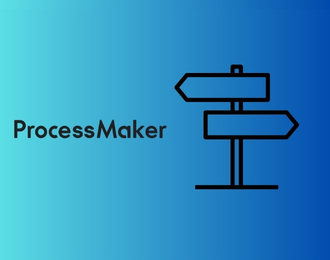Insurance companies are under pressure to modernise their claims management software. Customer satisfaction expectations are rising, and the need to comply with regulatory requirements is greater than ever.
At the same time, businesses are focused on cutting operational costs. The right insurance claims management system enables insurers to effectively manage claims, enhance data accuracy, and expedite processing times while minimizing human error.
The following article will explore the best claims processing software in 2025, including a detailed breakdown of FlowForma’s capabilities for insurance applications.
What Is Claims Management Software?
.png?width=650&height=488&name=Blue%20Gray%20Minimalist%20Circle%20Teamwork%20Infographic%20Presentation%20Graphs%20(23).png)
The 7 Steps in the cycle of Claims Management Software
Claims management software automates and streamlines the entire claims process. From claims intake to final settlement, these tools centralise the claims management process and replace manual processes.
Claims software typically includes document management, task assignment, case tracking, fraud detection, and real-time data access.
The software integrates with other tools, such as policy administration systems and CRMs, ensuring the entire system operates seamlessly.
With claims management software, insurance teams can process claims more efficiently, reduce delays, and improve customer satisfaction.
For a deeper dive into insurance automation software, you can read more about insurance automation tools here.
Key Features to Look For in Claims Management Software
.png?width=650&height=488&name=Blue%20Gray%20Minimalist%20Circle%20Teamwork%20Infographic%20Presentation%20Graphs%20(25).png)
A list of key features needed in a claims management software
When looking for claims software, keep an eye out for these features:
- No-code automation: Insurance workflow automation enables teams to create and adjust workflows easily without requiring IT involvement. For example, a claims team could automate the process of verifying policy details and approving a claim without writing a single line of code.
- Document generation: Automatically creates claims documents, saving time and reducing human error. Imagine a claims agent submits claim details, and the system generates a detailed claims report, ready for final settlement.
- AI-powered insights: Detects fraud and highlights potential issues. For instance, the system might flag a claim for fraud detection if it detects duplicate policy administration numbers across multiple claims.
- Audit trails: Tracks every action in the claims management process, ensuring regulatory compliance. For example, if a claim is disputed, the audit trail can show who approved each step and when it was approved.
- System integration: Ensures seamless data flow between claims software, policy administration systems, and ERP systems. Imagine a claim moving automatically from intake to settlement without any manual data entry.
- Customizable workflows: Adapt workflows to meet unique business needs. For example, one insurance carrier could create a claims management process specifically for property claims, while another could focus on auto claims.
- Mobile access: Allows agents to submit and track claims on the go using intuitive mobile forms. A field agent can submit claims directly from a customer’s site and update the claim status in real-time.
These features will enhance operational efficiency and help teams minimize errors in the claims process, ultimately improving overall customer service.
Watch this masterclass to understand how insurers are using FlowForma AI agents automate insurance claims.
Masterclass on using FlowForma for claims processing
Best Insurance Claims Processing Software in 2025
|
Software |
No-Code |
AI Features |
Native MS 365 Integration |
Best For |
|
FlowForma |
Yes |
Yes |
Yes |
Mid-large insurers, regulated sectors |
|
Appian |
Limited |
Yes |
No |
Enterprise insurers |
|
Pega Claims |
No |
Yes |
No |
Complex claims workflows |
|
Guidewire |
No |
Yes |
No |
Core system replacement |
|
BriteClaims |
Limited |
Limited |
No |
Smaller carriers using BriteCore |
|
Creatio |
Yes |
Limited |
No |
CRM-centric insurers |
|
Claimable |
Yes |
No |
No |
Digital-first startups |
|
Snapsheet |
Limited |
Yes |
No |
Auto and property claims |
|
Scootra |
No |
No |
No |
Cloud-native core replacement |
|
Origami Risk |
No |
Limited |
No |
Risk and compliance-led insurers |
Top Insurance Claims Processing Software in 2025
Choosing the right claims management software is crucial for insurers to stay competitive. With numerous options available, it's critical to examine features that genuinely make a difference in enhancing claims management.
1. FlowForma

FlowForma’s homepage
FlowForma is a no-code claims management software that allows business teams to design and automate their claims workflows efficiently. It’s intuitive, easy to set up, and helps reduce manual work while ensuring compliance.
FlowForma's Key Features
- No-code workflow builder for automating key processes in the insurance claims lifecycle
- AI Copilot for natural language-based claims automation
- Agentic AI for assisting insurance agents and claims teams in real time
- Built-in audit trails and compliance controls for fraud detection and regulatory compliance
- Document management for generating and storing claims documents
- Seamless integration with Microsoft 365, SharePoint, and Teams
- Real-time reporting for better decision-making
FlowForma's Pros
- Fast setup, no IT required
- Business users can automate claims without developers
- 10x faster claims processing than other tools
- Clear, predictable pricing
FlowForma's Cons
- Best suited for Microsoft environments
FlowForma's Pricing
FlowForma uses process-based pricing. All features, including AI, are available from the base tier, so you know exactly what you're paying for.
For more on automating insurance workflows, check out this guide to automating insurance policy renewal.
2. Appian

Appian’s homepage
Appian is a low-code automation platform designed for large insurance companies to manage complex claims workflows. It's best suited for insurers with dedicated IT teams and long-term digital transformation goals.
Appian's Features
- Low-code platform with business process management (BPM) capabilities
- AI features for claims routing
- Case management tools for tracking claims from intake to settlement
Appian's Pros
- Customisable for large-scale claims management
- Suitable for handling complex claims processes
Appian's Cons
- Requires IT and developer support for implementation
- Not ideal for non-technical teams
3. Pega Claims Management

Pega Claim’s homepage
Pega Claims Management offers a powerful automation engine for high-volume claims. It’s built for insurers with complex needs.
Pega's Features
- Claims automation engine to speed up processing
- Business rules and decision-making for fraud detection and compliance
- Workflow orchestration for improving claims process efficiency
Pega's Pros
- Excellent for high-volume claims processing
- Strong compliance and fraud detection features
Pega's Cons
- High cost of ownership
- Steep learning curve for claims teams
4. Guidewire ClaimCenter

Homepage of Guidewire’s claimcenter
Guidewire ClaimCenter is an end-to-end solution designed for large insurers. It tracks the entire claims lifecycle.
Guidewire's Features
- End-to-end claims management system
- Claims lifecycle tracking for claims organization
Guidewire's Pros
- Comprehensive and tailored for large insurance carriers
Guidewire's Cons
- Expensive setup
- Requires heavy IT involvement
5. BriteClaims (BriteCore)

BriteCore’s homepage
BriteClaims is part of the BriteCore platform, designed for small and mid-sized insurance carriers.
BriteClaims' Features
- Integrated claims management with BriteCore's policy administration system
BriteClaims' Pros
- Ideal for smaller carriers already using BriteCore
BriteClaims' Cons
- Limited flexibility for larger, complex insurers
6. Creatio

Creatio’s homepage
Creatio combines CRM and process automation to help insurers improve customer service while managing claims.
Creatio's Features
- CRM and process automation suite for insurance
Creatio's Pros
- Great for integrating claims management with customer service
Creatio's Cons
- Not purpose-built for claims management
7. Claimable

Claimable’s homepage
Claimable is a cloud-native claims management software designed for digital-first insurers and startups. While its UX design is strong, it lacks advanced automation features.
Claimable's Features
- Customisable cloud-based interface for claims submission
Claimable's Pros
- Strong UX for smaller teams
Claimable's Cons
- Lacks the depth of automation and reporting required by larger insurers
8. Snapsheet

Snapsheet’s homepage
Snapsheet provides a virtual claims management platform for auto and property insurers, excelling in claims intake and digital payment processing.
Snapsheet's Features
- Virtual appraisals for auto insurance claims
- Digital payment solutions for fast claims settlement
Snapsheet's Pros
- Fast and efficient claims intake
Snapsheet's Cons
- Lacks back-office functionality
9. Socotra

Socotra’s homepage
Socotra is a flexible, API-first insurance platform that allows insurers to integrate claims management and other insurance solutions quickly.
Socotra's Features
- API-first core system architecture for custom solutions
Socotra's Pros
- Highly flexible for insurers with unique business needs
Socotra's Cons
- Not designed for end-to-end claims management
10. Origami Risk

Origami Risk’s homepage
Origami Risk is focused on risk management and compliance. Its claims management functionality is proper but secondary.
Origami Risk's Features
- Risk and compliance management modules
Origami Risk's Pros
- Strong reporting capabilities
Origami Risk's Cons
- Less suited for complete claims lifecycle management
Why FlowForma Is the Best Insurance Claims Processing Software in 2025
 Testimonial featuring AON
Testimonial featuring AON
When it comes to improving your claims management process, FlowForma stands out as the ideal solution. It combines speed, ease of use, and cost predictability, making it the go-to choice for insurers managing complex claims workflows.
Unlike traditional claims software that requires IT-heavy setups, FlowForma empowers business teams to take control with its no-code builder, enabling rapid process improvements without any technical expertise.
FlowForma’s AI Copilot takes automation to the next level, instantly creating workflows based on natural language input. The Agentic AI further streamlines the claims process by assisting users in real-time, guiding them through decision-making steps.
Furthermore, with built-in audit trails, seamless Microsoft 365 integration, and robust compliance support, insurers can efficiently manage claims while ensuring complete transparency and regulatory compliance, without the need for costly add-ons or additional IT services.
If you’re looking to enhance your claims management software and reduce manual processes, FlowForma is the wise choice.
Register for a demo today to experience how FlowForma can revolutionise your claims processing.
.png) By
By 




